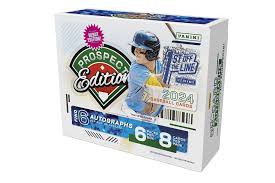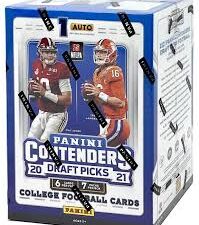

A picture said to have been autographed by “Shoeless” Joe Jackson broke the record as the most expensive signed sports picture ever sold. The autograph was authenticated by two companies, including PSA, and sold by two of the biggest auction houses in the business. However, there are serious doubts regarding the authenticity of the item. In pursuit of the truth, we ask: is the 1.47$ million “Shoeless” Joe Jackson auto a forgery?
Here at Cardlines, we have already warned you of the dangers of fake autographs. But, unfortunately, some experts can convincingly forge all manner of autos and fool even the most prestigious auction houses.
In the auction world, they don’t come much bigger and more prestigious than Christie’s. Formed in 1766 by James Christie, their main headquarters sit in King Street, London. Meanwhile, their American operations are spearheaded by the office Rockefeller Center in New York. Aside from Sotheby’s, they are the biggest auction house on earth.
Christie’s specializes in art, particularly impressionist and contemporary works. However, they have recently moved into the highly lucrative world of sports memorabilia. For example, on October 7, 2021, they partnered with Hunt Auctions to sell a private collection of baseball memorabilia. The auction was titled “Extra Innings: A Private Collection of Important Baseball Memorabilia.” You can view the items included in this auction here.
The auction took place both in-person in New York and online. By the time it closed on October 8, the auction had netted $9,390,125 in total.

There are books and museums dedicated to “Shoeless” Joe so that we will stick to the basics. Jackson was a star Major League Baseball outfielder. He played for the Philadelphia Athletics, Cleveland Naps, before being traded to the Chicago White Sox in 1915.
In 1919 the Sox were favorites to win the World Series against the Cincinnati Reds. After their surprising loss, several team members were indicted for intentionally losing the series in exchange for $5,000. Though Jackson played an excellent series offensively, batting .375 and setting a record with 12 hits, he admitted throwing the games. The outfielder repeatedly allowed runners to advance on hits towards him.
Baseball commissioner Kenesaw Mountain Landis banned Jackson from baseball. For life. Therefore, he is not in the Hall-Of-Fame despite a lifetime .356 batting average. We should note that advanced stats only enhance Jackson’s reputation. He has a lifetime OPS+ average of 170. That places him two points above Ty Cobb and a couple below Mickey Mantle. Yes, he was an all-time great.
The memory of “Shoeless” Joe remains powerful, and in some ways, his reputation has grown over the years. The movie Field of Dreams helped perpetuate his legend. In 1999 the House of Representatives passed a resolution backing the banned stars sporting achievements.
One of the leading institutions keeping the memory and legacy of Joe alive is the “Shoeless” Joe Jackson Museum and Library in Greenville, South Carolina. It is located in Jackson’s original home.
Christie’s listing includes a long description. It starts with a lengthy recapping of “Shoeless” Joe’s career. The long written section ends with a paragraph describing the item:
“Offered is the crown jewel of the Frank W. Smith archive in the form of an original autographed photograph of Joe Jackson. The 8″ x10” matte finish image pictures Jackson in throwing pose taken at spring training in Alexandria, LA in March of 1911.
“Alexandria Mar 1911″ inscription added by Smith, as is seen on several other Cleveland images from the archive. Jackson’s labored and primitive signature formation is immediately recognizable due to his inability to formally read or write. As a result of Jackson’s relative illiteracy there are scant few authentic examples of his autograph known to exist. To date, the offered Jackson signed image is the lone surviving example of any type. Based on the scarcity of signed images from this period, in general, coupled with the miniscule population of original Jackson autographs we cannot overstate the rarity of this offering.”

The official story is that Frank W. Smith, then a photographer for the Cleveland Plain Dealer newspaper, went down to Alexandria, Louisiana. That southern town hosted spring training for the Cleveland Naps (the team later renamed the Indians). There Smith took pictures of the players and obtained their signatures.
A spokesman for Heritage Auctions explained that this story made the photo all the more special: “The fact that Smith took the time to ask each player to sign and date their photos makes this collection even more unique and vital, especially when you consider that it was all but forgotten until William Bowen rescued it from the dustbin of history.”
The autographed photo went for $1,470,000. The sale set a record as the most expensive signed sports photo ever sold. The purchase also received a significant amount of attention from the mainstream media. Major journalistic outlets such as USA Today and the Washington Post covered the record-breaking sale.
Dave Hunt, CEO of Hunt Auctions, was delighted with the sale. He told the Washington Post, “We sort of thought that if it brought somewhere between $500,000 and a million, that would be a wild success and record-setting in and of itself. But when it got to this level, I’m not going to say I’m shocked. That’s not the right word. But, like, it is pretty stunning.”
However, these stories have failed to mention that there is reason to believe the signature is forged.
The “Shoeless” Joe Jackson Museum and Library firmly believes that the autograph is a forgery. When I asked Dan Wallach, the Executive Director of the Museum, about it, he provided us with a strong statement on the matter: “It is our strong belief that the 1911 photo which recently sold for $1.47 million was not signed by the hand of Joe Jackson.”
Wallach is not the only expert with serious doubts over authenticity. Ron Keurajian, the author of an essential reference book on baseball Hall-Of-Famer autographs, is also skeptical. He told Cox Media Group, “Here’s a guy who was illiterate, but he can write ‘Alexandria’ on the photograph? And for those who believe Frank Smith wrote ‘Alexandria’ on the photo, so, he wrote it in the same hand as Jackson’s? That seems highly unlikely.”
Wallach also provided us with the four known examples of Jackson’s signature. Let’s take a look and judge for ourselves.
Jackson was born into an impoverished family and had to drop out of school by age 7. Instead of furthering his education, he went to work 12-hour shifts at a textile mill. As a result, he was functionally illiterate.
His illiteracy meant that “Shoeless” Joe rarely signed his name. Indeed, the documents with his confirmed signature are all ones he had to sign to conduct business. They do not include autographs for fans, possibly out of embarrassment.
However, Jackson knew how to sign his name. It appears that he was coached in doing so by his wife, Katie Jackson. Joe is also believed to have traced over her version of his signature when signing legal documents.
The first known signature dates to 1917. The United States entered World War 1 that year, and Joe had a draft card like most other males of eligible service age. The military gave Joe a deferment because he was married. However, upon review, the armed forces changed their decision and decided to draft the outfielder. To avoid the draft, Jackson took a job as a shipbuilder in Wilmington, Delaware.
Since this is the earliest known signature by Jackson, aside from the possible forgery, it is of particular interest.
Here is a picture of the draft card.

There are other confirmed signatures of “Shoeless” Joe. One is on a bill of sale for a cigar store in Chicago. He sold it after baseball upheld his band, and the former player moved his family to Georgia.
Here is a picture of that bill of sale, dated 1921.

Other examples of the player’s signature appear on his drivers’ license and last will and testament. Goldin Auctions sold the drivers’ license for $125,000 through Goldin Auctions. PSA graded and authenticated this signature as well.


We reached out to Christie’s, PSA, and Heritage regarding the allegations. Heritage has not responded so far. Here are the responses we did receive:
Christie’s provided us with the following response: “Under no circumstances would Christie’s knowingly offer an object for sale where there are valid concerns over authenticity. Extensive research and due diligence checks were undertaken to support the full authentication which was executed by multiple national third party authentication companies. This information was shared with and readily available to all interested parties and the media prior to the auction with no concerns raised.”
PSA also responded. In an email, they told Cardlines: “Thanks for taking the time to reach out to PSA with your inquiry, so you can receive an answer, direct from the source. I can appreciate your concerns as PSA takes great pride in each item that we certify and authenticate. Our authenticators have a diverse knowledge base that is complemented by proprietary methods and technology to form the following four-step authentication process.” The response then goes on to list the process by which PSA authenticates autographs. It concluded with the remark that “Customer Service cannot evaluate the legitimacy of a certification via images, but if there is concern regarding the legitimacy of your PSA/DNA certification, we welcome sending the item in for review, in which the autograph would be looked at along with the DNA daub to ensure validity of the cert.”
As you can see, Jackson had a very unique signature. The first name ends with a capital E letter. The way Joe signed it, the letter looks like a backward 3. There is also ample space between the “a” in the last name and the (not so) adjacent letters. Finally, the signature ends with a long flourish to the “n.”
The signature on the picture sold by Christie’s has some of these hallmarks. But this is not conclusive proof that the autograph is authentic. In his book, Keurajian referred to Jackson’s signature as “rudimentary” and “very easy to replicate.”
In addition, beyond some superficial similarities, the penmanship style is markedly different. You can see that most notably in the “e,” which appears to have been written more capably than Jackson’s signature. And it is unlikely that the signature would be better in 1911 than it would appear later in the players’ life.
Furthermore, the inclusion of extra words referring to the time and place (Alexandria, 1911) are suspect. It is not what you would expect from an illiterate man. Heritage has claimed in response that Smith wrote in the date and location. But since the handwriting looks very similar in the autograph and the rest of the inscription, this raises more questions.
Finally, it is fair to say that the excellent condition of this item, which is now 110 years old, is suspicious.
While I cannot confirm whether the signature is genuine or not, the skeptics make a good case. Thus, there is at least reason to doubt the veracity of the item.

If the allegations are true, some of the most prominent players in sports memorabilia have a lot to answer for. The photograph is already well-known in the baseball memorabilia world. Heritage Auctions sold it for $179,250 in 2015. PSA has also verified the signature. They even gave the photo a PSA 9 grading. Sharon Bowen consigned the item to Heritage Auctions. Her husband reportedly purchased the item from the original photographer Frank W. Smith.
However, Dan Wallach from the “Shoeless” Joe Museum told Cardlines that experts had expressed doubts regarding the veracity of the signature in the past. Wallach explained, “when this same photo surfaced and was sold at an auction in 2015 for $179,250, there were many concerns by leading experts about its authenticity. Those concerns have never gone away.”
If Heritage had any reservations about the photo at the time, they did not voice them. Chris Ivy, Director of Sports Auctions at Heritage, said, “When you calculate the importance, rarity, and condition of this piece, there’s no hyperbole in the suggestion that this ranks among the finest sports autographs ever to be sold.”
The doubts raised about this item mean that the entire Frank W. Smith collection is suspect. It includes many other autographed pictures, which you can see on the Heritage Auctions website. The collection has pictures of legendary New York Giants manager John McGraw and Hall-Of-Famer southpaw Rube Marquard, 1912 MVP Larry Doyle and others. PSA also graded the McGraw picture and gave it an 8.
The questions surrounding the “Shoeless” Joe autographed picture remain unanswered. However, the lack of transparency regarding the item is striking. Neither Heritage nor Christie’s have ever addressed these suspicions and certainly did not acknowledge them when listing the item. This is not the first story that has made collectors question the most prominent institutions in the hobby, such as PSA and the major auction houses. Unfortunately, we are confident it won’t be the last.
Just as disturbingly, many media outlets covered the story, but hardly any mentioned that experts are uncertain of its authenticity. As always, the companies in charge of verification throw transparency and self-examination out the window on big money transactions.
Topps Chrome 2024-25 Basketball: Honest Review and Notes
Did you know this SECRET about PSA slabs? #sportscard #tcg
5 EASY tips to make more money on eBay sports cards.
I opened a sports card mystery box and found something AWESOME inside
The SAD story of Collectable. What went wrong? (The Downfall Fractional Sports Card Investing)
what was Panini doing? 🙄
I compared sports card prices from the big sellers to save YOU money
Is GameStop buying PSA? (the truth!)





2022 Topps Heritage Baseball Blaster Box Configuration: 7 Packs per Box – 9 Cards per Box. Plus 1 extra pack.











Keep up on breaking Sports Card News, our latest articles, product specials and exclusive content with expert analysis of hobby trends.

© Copyright 2025 - All rights reserved Cardlines.com / Media Techs LLC - Sports Card News, Reviews, Releases and BREAKS - #thehobby.
Important: When you click on links to various merchants on this site and make a purchase, this can result in this site earning a commission. Affiliate programs and affiliations include, but are not limited to, the eBay Partner Network.
Panini is launching a WNBA Product at $30,000!?
Cardlines June 27, 2025 5:54 am